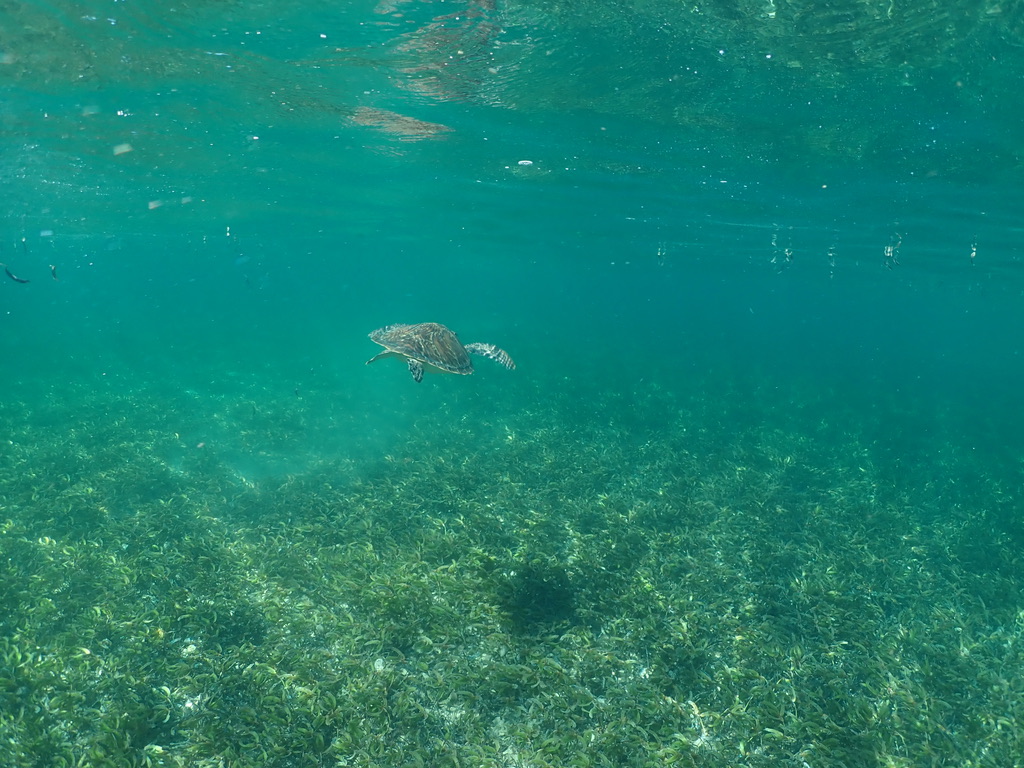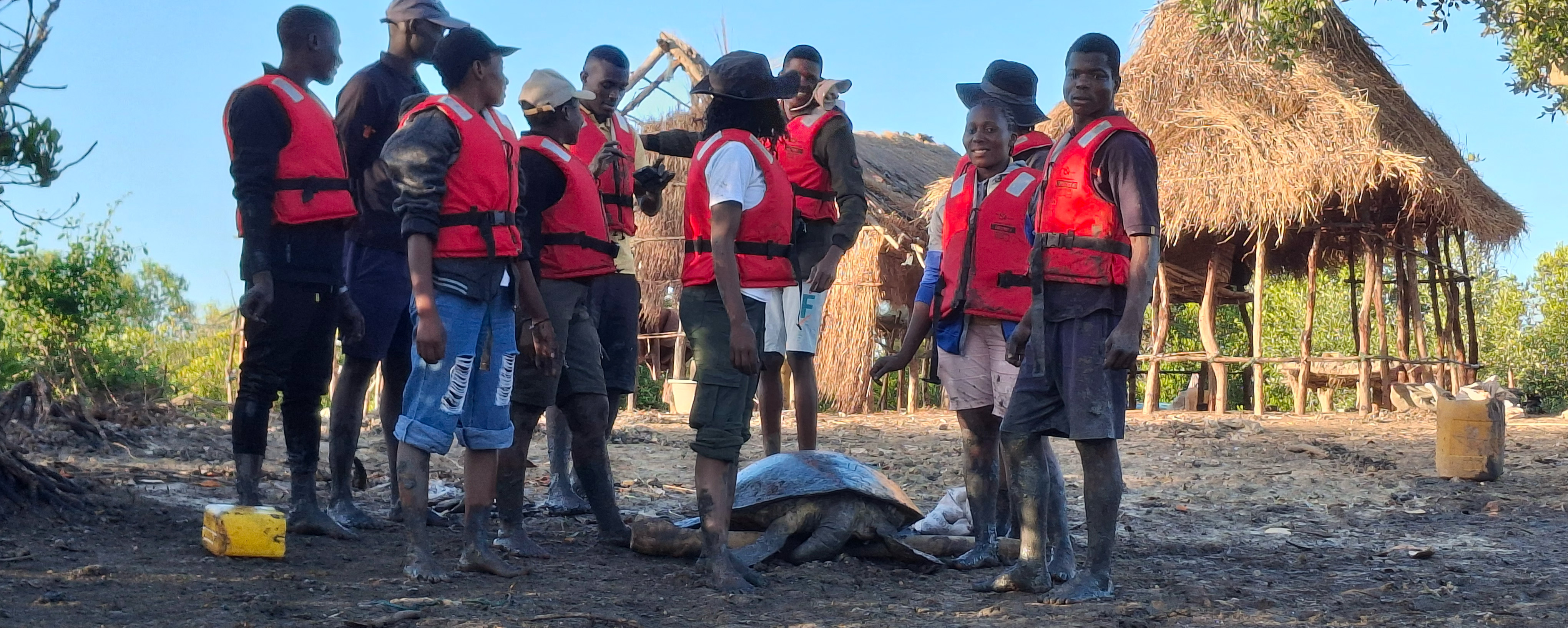


Our Mozambique Science Department has been featured in the latest publication from the Western Indian Ocean Marine Protected Areas Management Network (WIOMPAN), which highlights our initiatives to safeguard marine biodiversity and strengthen community participation in conservation. The article focuses on our work in sea turtle rescue operations, mangrove habitat restoration, and building shared responsibility among coastal populations.
Connecting Science and Community for Lasting Impact
Our approach is rooted in the belief that conservation succeeds when people are directly involved in shaping and sustaining it. Rather than viewing local populations as passive beneficiaries, we collaborate closely with them, recognising traditional knowledge, investing in practical skills, and ensuring that communities are central to conservation.
Within the Save Seascape, in Sofala Province, our community Turtle Guard (known as Guardas de Tartarugas) are trained in basic monitoring methods for turtles, megafauna, and fisheries.
During the most recent August spring-tide cycle, this community team achieved several significant conservation actions: they rescued and released two large green turtles; they incinerated two bycatch carcasses in collaboration with authorities; and they documented three empty carapaces.
On World Turtle Day, while returning from community awareness activities, the team encountered mangrove channel poaching hotspots. They intercepted fishers with two green turtles — one a juvenile already butchered, the other a large adult still alive. In low tide conditions, the team performed a rescue: freeing the adult from the mud and escorting it to coastal waters to prevent its recapture.
In a distinct incident, a local fisher handed over a critically endangered juvenile hawksbill turtle. This event provides rare evidence that hawksbill turtles use mangrove habitats, an insight valuable for future conservation and management planning.

Partnerships, Outreach and Governance
The Guardas de Tartarugas monitors coordinate closely with coastal police forces, CCPs, local community leadership, the Machanga District Administration, and fisheries officers (including SDAE, SDPI, ADNAP). These collaborations strengthen synergies across conservation, law enforcement, and local governance.
Outreach campaigns have accompanied the on-the-ground rescue work. The teams use REPMAR posters, safe-release guidance, and secure reporting schemes to raise awareness and embed conservation practices within community norms.
These efforts help build foundational trust and resilience for community-managed fisheries areas across the Save Seascape region.
Insights from Mangrove Habitat Work
While the article emphasises turtle rescues, it also draws attention to the significance of mangrove habitats in central Mozambique. The interception of poaching within mangrove channels, and the confiscation of turtles from those channels, underscores the ecological importance of mangrove systems as habitat and movement corridors.
Observations of hawksbill use of mangroves also point to previously under-appreciated habitat connectivity between mangrove zones and marine turtle life cycles.
Reflections and Next Steps
The WIOMSA article highlights that the community teams’ work is gradually reinforcing stewardship across the Save Seascape. The combination of rescue operations, habitat monitoring and public outreach is creating momentum for locally managed conservation zones.
There is also a strong role for local authority engagement, reliable reporting, and institutional collaboration in sustaining these initiatives, especially when enforcement and habitat protection intersect.
We are proud to see these efforts recognised and shared by WIOMSA. We hope our ongoing work in central Mozambique’s Save Seascape continues to deepen the links between coastal communities, habitat protection and marine biodiversity.
If you'd like to support our year end fundraising efforts, please visit our donation page, linked here.



